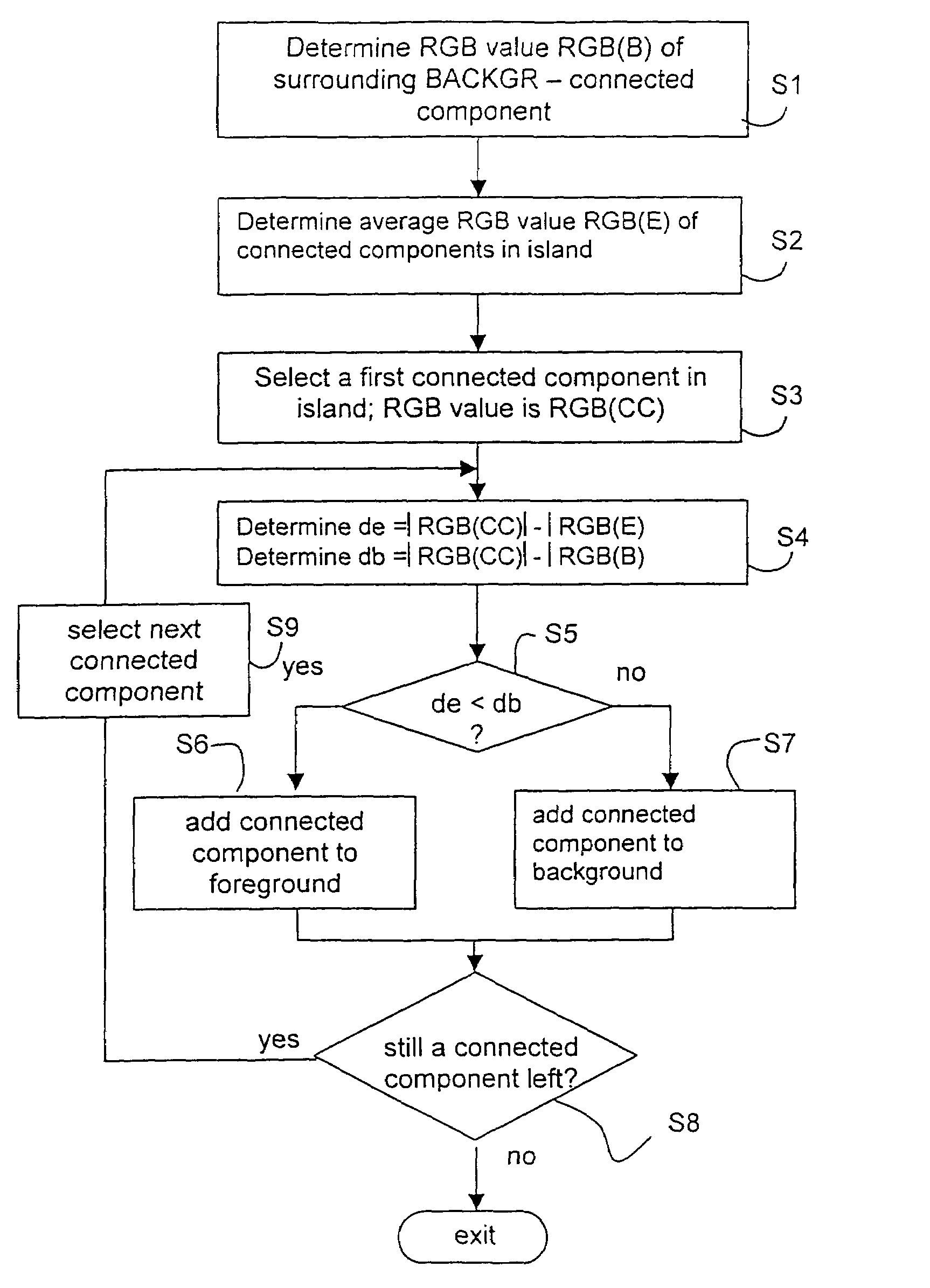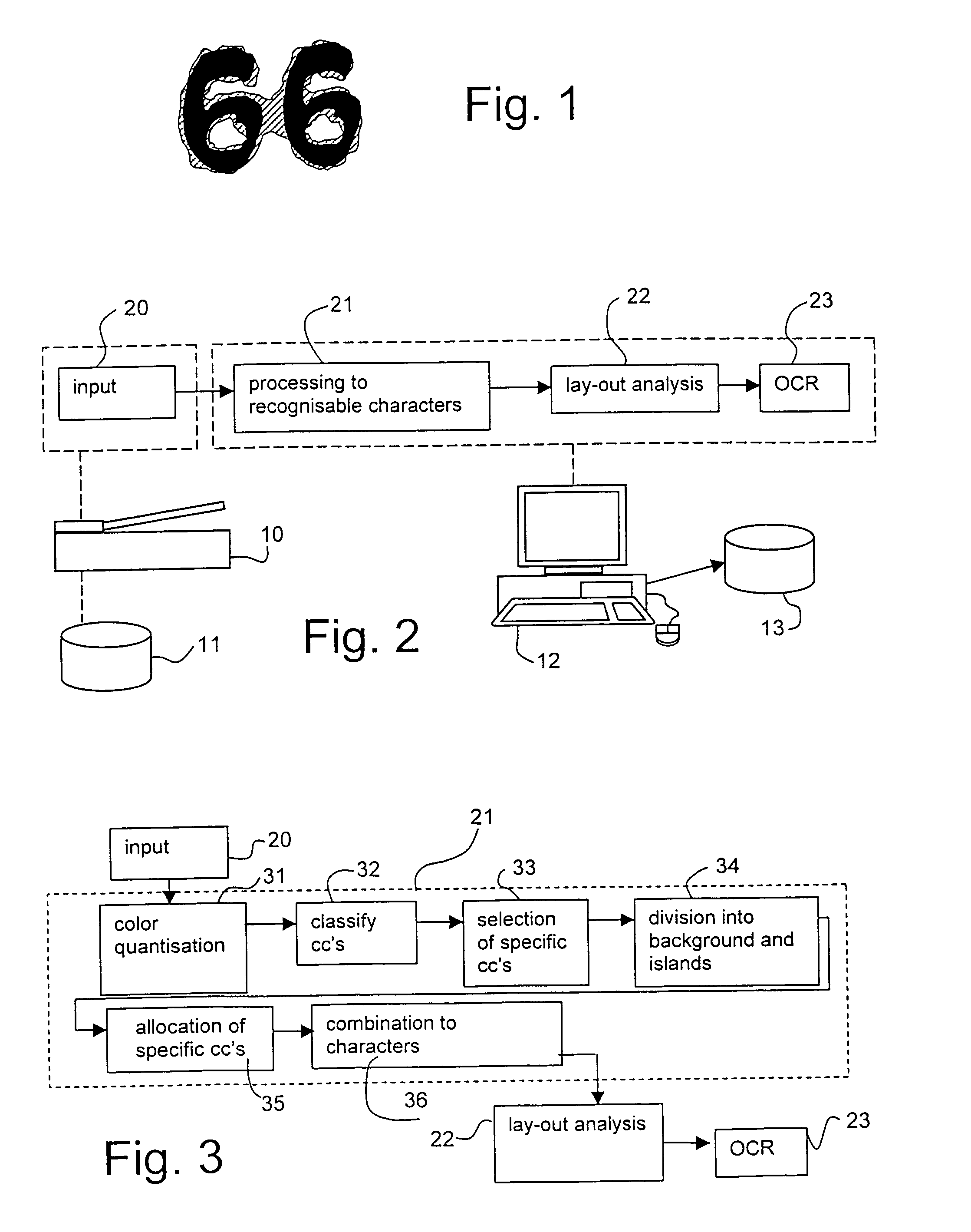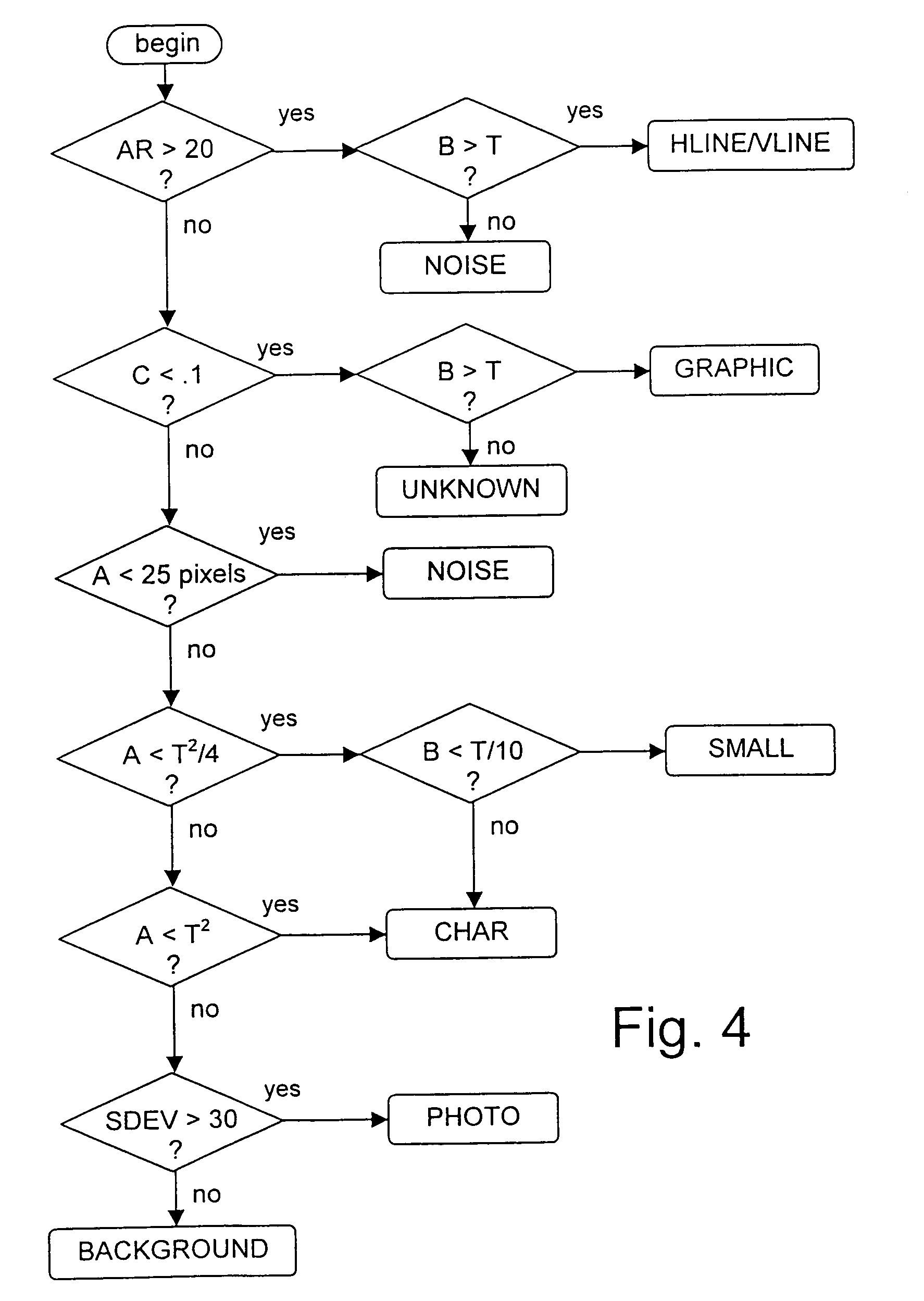Interpretation of colored documents
a technology of colored documents and interpreters, applied in the field of interpreters of colored documents, can solve the problems of inability to apply methods immediately to colour-containing digital images, deviant colour areas, and errors in colour images, and achieve the effect of improving the processing of colour images and more accurate results
- Summary
- Abstract
- Description
- Claims
- Application Information
AI Technical Summary
Benefits of technology
Problems solved by technology
Method used
Image
Examples
Embodiment Construction
[0034]FIG. 2 shows an environment in which the present invention can be fruitfully applied. The drawing shows an assembly of a source unit 20 for a digital colour image, for example an electro-optical scanner 10 for scanning a document or a storage unit 11 with scanning data, a preprocessing unit 21 according to the present invention, which extracts information elements, and one or more interpretation units, in this example a lay-out analysis unit 22 which establishes a mutual connection of information units and a character recognition unit (OCR) 23 which converts the text image thus found into text code, which can further be processed digitally. The units 21, 22 and 23 can be implemented in a suitably programmed computer 12. The results can, for example, be stored in a memory unit 13.
[0035]Characters cannot always be recognised easily in a scanned colour image. A colour scan in fact frequently contains many different colours, even if the scanned image has just a few (main) colours....
PUM
 Login to View More
Login to View More Abstract
Description
Claims
Application Information
 Login to View More
Login to View More - R&D
- Intellectual Property
- Life Sciences
- Materials
- Tech Scout
- Unparalleled Data Quality
- Higher Quality Content
- 60% Fewer Hallucinations
Browse by: Latest US Patents, China's latest patents, Technical Efficacy Thesaurus, Application Domain, Technology Topic, Popular Technical Reports.
© 2025 PatSnap. All rights reserved.Legal|Privacy policy|Modern Slavery Act Transparency Statement|Sitemap|About US| Contact US: help@patsnap.com



